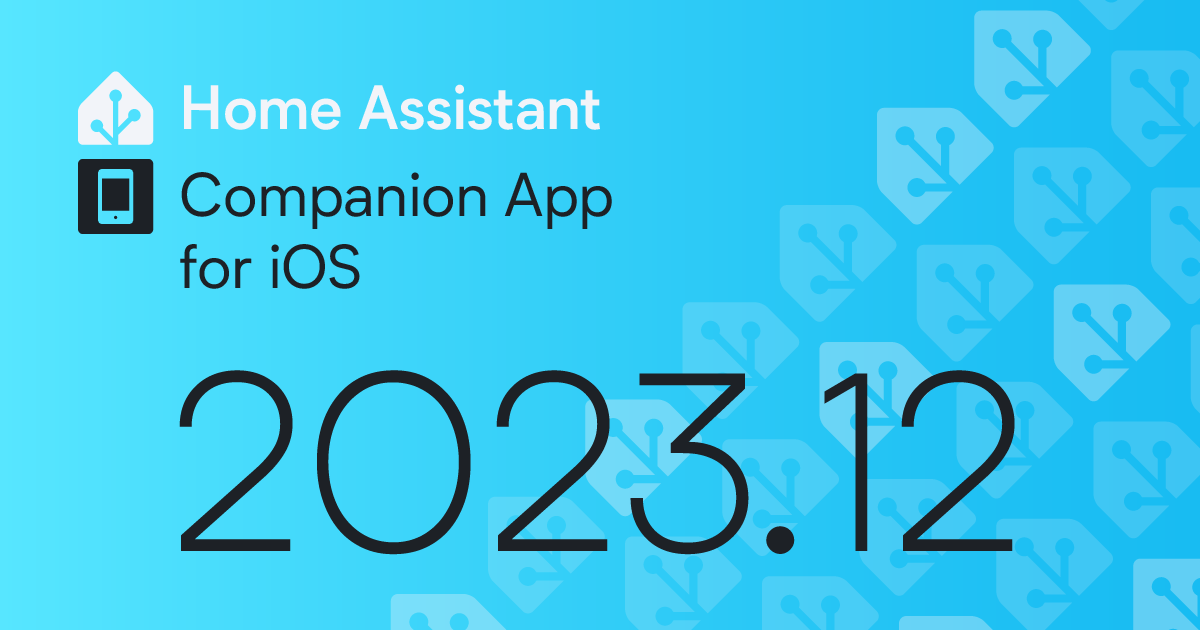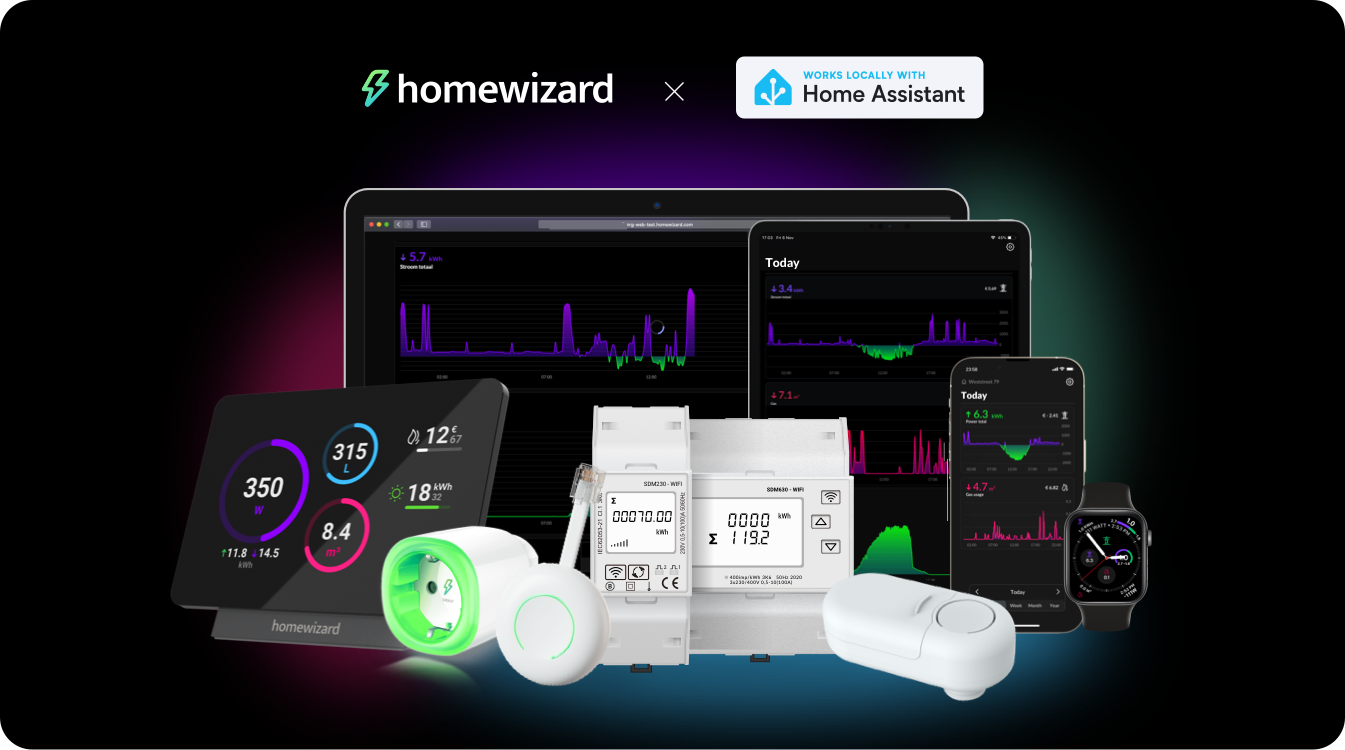Blog
Voice Assistant Contest - Let's build and win some prizes!

TL;DR: We are organizing a voice assistant contest between the 17th of January and the 10th of March. You can win some Home Assistant Green, Home Assistant SkyConnect, and a chance to be on a livestream with us to talk about your work.
2023 was the Year of the Voice. It was a yearly goal to let users control Home Assistant in their own language. We built some amazing things throughout the year, from a very powerful intent recognizer specifically optimized to run on a small computer like a Raspberry Pi 4, all the way to custom wake words created by our community.
In fact, we believe that what we built during the Year of the Voice allows almost anyone to build a voice assistant that embodies our Open Home values perfectly: Personalized, Private, and Sustainable.
Every component of our voice assistants can be heavily customized to fit your language, your style and your needs, fully local options exist for each of them, and finally you can retrofit voice assistant into anything, even a 1970s Walkie Talkie
This is why, after spending a year building great things, we want to celebrate what our voice assistants can enable with the community: We’re launching a voice assistant contest, with great prizes to win!
Read on →The State of Matter livestream
TL;DR: We’ll have a Matter livestream on Wednesday, January 10. Post all your questions about Matter and Home Assistant in the comment section, and we’ll try to answer them during the stream!
In late 2022, Matter was first released to the public. It promised to be the new local home automation standard that would unify various manufacturers’ ecosystems and smart devices. We joined the CSA, the alliance developing Matter, to have a front-row seat and make our implementation of Matter the best we can. Now, one year later, did Matter live up to its promise, and what’s the state of Matter within Home Assistant?
We ask this question because lately, articles about Matter in the media have turned a bit sour. Compared to older standards like Zigbee and Z-Wave, they say, Matter is not yet in good shape. But this is not an entirely fair comparison: Zigbee and Z-Wave have had many years to develop into what they are now, while Matter was released just over a year ago. A new standard will always need some time to settle in and mature.
Our view on Matter is both more optimistic and still realistic. We think Matter completely fits our Open Home vision. In the future, Matter will give us all fast, reliable, and local control of our smart home devices. At the same time, we’re realistic; this perfect vision of Matter has yet to arrive, and not everything we hoped for is possible today. Still, significant companies and organizations around the globe have committed to Matter, and they are improving it every month. We believe Matter is here to stay.
So, instead of discussing what isn’t currently working in Matter, we want to explain what Matter can offer you today. We want to show you the potential Matter has for the future and how your first steps with Matter today prepare you for that. Talk about what Thread is, how it relates to Matter - it is not the same! - and how to build your Thread network. And much more.
On Wednesday, January 10, at 12:00 PST / 21:00 CET, we’ll be hosting a State of Matter livestream to discuss this and address your questions and concerns about Matter and Home Assistant. We’ll make sure it’s an excellent watch for both beginners and more technically-oriented viewers - our Matter developers will be there to give you a technical deep-dive into Matter, too. Please save the date in your calendar and post all your questions and concerns in our comments section!
2024.1: Happy automating!
Happy New Year! 🍾
We wish you, and all the loved ones around you, all the best for 2024! 🥂
I cannot think of a better way to start the new year: Home Assistant Core 2024.1! 🎉
This release is fairly small, as expected; we are just coming out of the holiday season. However, it does contain some nice improvements and features to be excited about and a stunning total of 13 new integrations!
My favorite: the automation editor changes. It had quite a bunch of user interface tweaks. Most are focused on making it friendlier and easier to use for new and long-term users, making it quicker to find the right trigger, condition, or action.
I greatly like this improved experience, and I hope you do too!
Enjoy the release!
../Frenck
Read on →Companion app for iOS 2023.12: Let’s go!
We have good news for those hoping for more features and faster development of the iOS Companion App! I, Bruno Pantaleão, have joined Nabu Casa as an iOS engineer (of course, also working on watchOS, iPadOS, and macOS apps), and am planning to continue the great work done by Robbie Trencheny, Zac West, and the community, giving the iOS app the attention that it deserves. So let’s talk about this month’s 2023.12 release of the app!

Disabling new login page functionality
In release 2023.12 we added a redesigned login page to Home Assistant. It detects when you are accessing Home Assistant via your local home network, and if so, presents a redesigned login experience that shows your user profiles. If you access Home Assistant from outside your home network, the login page still asks for your username and password, like before.
We have heard the concerns from the community that this functionality can open up your Home Assistant instance to a user enumeration attack from within the local network. A malicious actor with access to your local network could get the names and pictures of all Home Assistant users. They could use this information to make attacking your Home Assistant instance easier.
A security issue was filed for this on December 10, we have accepted and published the corresponding GitHub Security Advisory
While researching the feedback we received, we were troubled to discover that the users who experienced problems with the new login page often used misconfigured reverse proxies. When the reverse proxy is not configured correctly, Home Assistant is no longer able to discern between traffic from your local home network or a public network. These users would see the redesigned login page when accessing Home Assistant from outside their home network.
To improve the network security of these users, we are researching how we can use Home Assistant to detect more variations of misconfigured proxies and inform them about it.
We redesigned the login page because we believed the local home network is within the privacy of your own home and a trusted environment for showing the people in it. We assumed that users attempting to log in on the local network are also trusted and allowed to see other user profiles, similar to what Microsoft, Apple, Netflix, and other companies assume in their products.
That said, we do hear you and take your feedback, and the potential security risk to users with misconfigured reverse proxies, seriously. Thank you for bringing this to our attention and being open about your concerns.
Year of the Voice - Chapter 5

We’ve reached the end of Home Assistant’s Year of the Voice! It was our goal for 2023 to let users control Home Assistant by speaking in their own language.
At the start of 2023, Home Assistant had basic text-based control for some devices in English only. As the year closes, users can now control and ask questions of their smart homes with voice in over 50 languages across a variety of devices, including:
- Any ESPHome
device with a microphone - Android phones, tablets, and smart watches
- Old school analog phones (with an adapter)
Home Assistant users can now create multiple voice assistants by mixing and matching components of a voice “pipeline”. Home Assistant Cloud subscribers automatically gain access to high-quality voice components in over 130 languages and dialects. Fully local components are available as well, such as our Piper
In Chapter 4, we added wake word processing directly into Home Assistant by leveraging the openWakeWord
For the final chapter of 2023, we have expanded the available types of voice commands to include weather, temperature, and to-do lists. Voice satellites are now aware of which area they’re in, and more hardware/software options are available too.
Happy holidays!
Silicon Labs partners with Nabu Casa to support Open Source
Silicon Labs
![]()
Silicon Labs is the company behind Z-Wave and designs chips for Z-Wave, Zigbee, Thread, and more standards. Their chips provide connectivity to many devices, including Philips Hue, Ring, IKEA TRÅDFRI, and our own Home Assistant Yellow and Home Assistant SkyConnect products. In fact, every Z-Wave chip in a Z-Wave product ever made came from Silicon Labs.
We love open standards because they live up to our Open Home values for the smart home: privacy, choice, and sustainability. This is why Nabu Casa, with the revenue received from Home Assistant Cloud subscribers, invests heavily in integrating these open standards, which involves working on a daily basis with Silicon Labs technologies. For example, we employ Dominic
Z-Wave JS is the only open-source implementation of Z-Wave, powering an increasing number of Z-Wave platforms beyond Home Assistant. Our work is fundamental to the growth of the Z-Wave ecosystem, and we are happy to see this get acknowledged by Silicon Labs with this partnership. With Home Assistant, we are exposed to many different devices running Z-Wave, Zigbee, and Thread. And as a partner, we are now able to collaborate with Silicon Labs to report bugs and get our issues fixed with priority.
HomeWizard joins Works With Home Assistant program
We’re delighted to announce that HomeWizard has joined the Works With Home Assistant program under the ‘Works Locally With Home Assistant’ badge and is committed to ensuring their products work well in Home Assistant. This Dutch company creates Wi-Fi devices that give households insight into their electricity, water, and gas consumption. They want to make people aware of their energy consumption and help them save on energy - not just because it’s good for their wallet, but also good for the world. A mission that matches our Open Home values perfectly. They will also be the first company to use our updated Works With Home Assistant badge, featuring the new Home Assistant logo!

2023.12: Welcome home!
Home Assistant Core 2023.12! 🎄
The last release of 2023 is here, and we are going out with a bang! 🎉
2023 has been the Year of the Voice, and
please stay tuned, as we will host a final 5th chapter live stream on our YouTube channel
This release has some nice quality-of-life improvements, making it feel like Christmas already! The thermostat card has been redesigned to match the gorgeous new entity dialog introduced, a new feature for the ever-improving tile card, re-importing blueprints, and much more!
I’m most excited about the new login page that this release brings. It is beautiful, modern, and literally welcomes you into your own home! 🏡 Home is where Home Assistant is, right? 😃
This is it for 2023! What a year it has been! I just got one last thing to say this year:
Thank you for using Home Assistant! ❤️
Happy holidays & enjoy the release!
../Frenck
Read on →Nabu Casa at the Matter Member Meeting
TL;DR: We represented Home Assistant, our community, and the Open Home vision at the Matter member meeting in Geneva. We’re hosting a live stream to talk Matter in January to update you about our progress and answer your questions. Leave your questions in the comments below!
Two weeks ago me, Marcel van der Veldt, and Stefan Agner, traveled to Geneva to represent Home Assistant, our community and the Open Home Vision at the Member Meeting of the Connectivity Standards Alliance (CSA). This is an important meeting where companies from all over the world meet to talk and decide about the Matter standard and how to implement it.
(Matter is the new smart home standard that promises to make everyone’s smart home devices work with each other across platforms and ecosystems, locally and privately. It’s being developed by the CSA, which is also responsible for Zigbee).
 Stefan and Marcel
Stefan and Marcel
We were able to attend because Nabu Casa

